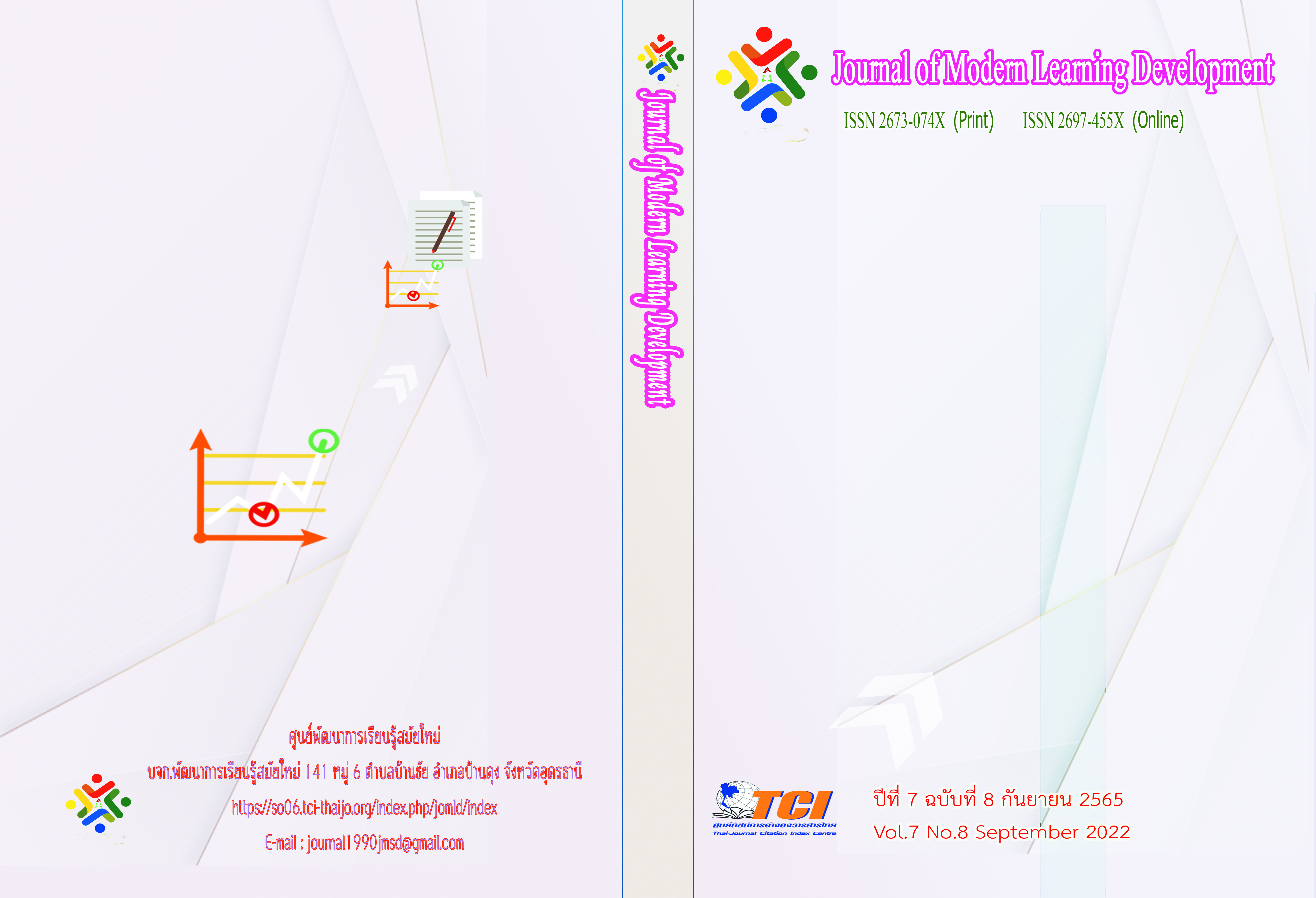Factors Affecting in Managing Cultural Tourism of the Tourist Attractions in Kalasin Provice
Main Article Content
Abstract
The purposes of the study were 1) to study levels of factors affecting in managing cultural tourism, 2) to investigate levels of managing cultural tourism, 3) to explore factors affecting in managing cultural tourism, and 4) to study suggestions on ways of managing in factors affecting in managing cultural tourism of the tourist attractions in Kalasin province. The study was a quantitative research. The instruments were the questionnaires. The participants were 400 tourists in Kalasin province and the calculation formula of Taro Yamane is presented. The statistic used were frequency distributions, mean, average, standard deviation, Pearson Product Moment Correlation, and Multiple Linear Regression with the statistically significant at the 0.05 level. Beside that, the suggestions were calculated through the frequency distributions and description. The results shown 1) levels of factors affecting in managing cultural tourism were at the highest level, 2) levels of managing cultural tourism were at the highest level, 3) there were 3 factors affecting in managing cultural tourism of the tourist attractions in Kalasin province; culture, transportation, and income These 3 factors were used to describe the dependent variable, managing cultural tourism of the tourist attractions in Kalasin province averagely at 28.07, R2 = .287, with the statistically significant at the 0.05 level, and 4) suggestions on ways of managing in factors affecting in managing cultural tourism 1) improving the interior landscape with beautiful, clean, and tidy conditions, 2) using the unique and outstanding from each culture to attract the tourists, 3) it should have enough transportation for the tourist attractions, it should have facility management, and using various and continue publics.
Article Details
References
ชนัญ วงษ์วิภาค. (2546). การจัดการการท่องเที่ยววัฒนธรรม. นครปฐม: มหาวิทยาลัยศิลปากร.
บุญเลิศ จิตตั้งวัฒนา. (2548). การพัฒนาการท่องเที่ยวแบบยั่งยืน. กรุงเทพมหานคร: เพลสแอนด์ดีไซด์จำกัด.
ประเมศฐ์ พิชญ์พันธ์เดชา. (2561). การจัดการการท่องเที่ยวเชิงศาสนาของเกาะฮ่องกงที่มีอิทธิพลต่อ นักท่องเที่ยวไทย. มหาวิทยาลัยธรรมศาสตร์: วิทยาลัยนวัตกรรม.
พรทิพย์ พิมลสินธ์. (2540). การวิจัยเพื่อการประชาสัมพันธ์. กรุงเทพมหานคร: ประกายพฤก.
พิพิธภัณฑ์สิรินธร. (2559). ออนไลน์. สืบค้นเมื่อ 6 มกราคม 2564. แหล่งที่มา: http://www.sdm.dmr.go. th/website/index.php
ล้วน สายยศ และอังคณา สายยศ. (2539). เทคนิควิจัยทางการศึกษา. กรุงเทพมหานคร: สุวีริยสาส์น.
วรรณา วงษ์วานิช. (2539). ภูมิศาสตร์การท่องเที่ยว. กรุงเทพมหานคร: มหาวิทยาลัยธรรมศาสตร์.
วไลลักษณ์ น้อยพยัค. (2559). นวัตกรรมการท่องเที่ยว. จุลสารวิชาการอิเลคทรอนิกส์ การท่องเที่ยวแห่ง ประเทศไทย.
ศิริวรรณ เสรีรัตน์ และคณะ. (2552). การบริหารการตลาดใหม่: Marketing management (ฉบับปรับปรุงปี 2552). กรุงเทพมหานคร: Diamond in Business world.
สำนักงานจังหวัดกาฬสินธุ์. (2563). แผนพัฒนาจังหวัดกาฬสินธุ์ พ.ศ.2561-2565 (ทบทวนแผนปี 2563). กาฬสินธุ์.
สำนักเศรษฐกิจการท่องเที่ยวและกีฬา (2559). โครงการทิศทางการพัฒนาท่องเที่ยวของประเทศไทยในระยะ 10 ปี. กรุงเทพมหานคร:.บริษัท เอฟฟินิตี้ จำกัด.
สำรวย เมฆวราวุฒิ. (2550). การพัฒนาแหล่งท่องเที่ยวเชิงอนุรักษ์ กรณีศึกษาตลาดน้ำตลิ่งชัน. กรุงเทพมหานคร.
องค์การบริหารส่วนจังหวัดกาฬสินธุ์. (2562). แผนส่งเสริมการท่องเที่ยวองค์การบริหารส่วนจังหวัดกาฬสินธุ์. กาฬสินธุ์.
อดุล จตุรงคกุล. (2543). กลยุทธ์การตลาด (พิมพ์ครั้งที่2). กรุงเทพมหานคร: โรงพิมพ์มหาวิทยาลัย ธรรมศาสตร์.
อารยา อันคชสาร. (2554). การประเมินศักยภาพของตลาดน้ำวัดกลางภูเวียงเพื่อเป็นแหล่งท่องเที่ยวเชิงนิเวศ. กรุงเทพมหานคร: มหาวิทยาลัยศิลปากร.
อุไร มากคณา. (2564). ความหมายและความสำคัญของการประชาสัมพันธ์. ออนไลน์. สืบค้นเมื่อ 10 มกราคม 2564. แหล่งที่มา: http://maewmakkana.blogspot.com/2011/02/blog-post.html
อุษณีย์ ศรีภูมิ. (2544). ความคิดเห็นของนักท่องเที่ยวต่อการท่องเที่ยวทัศนศึกษาในเขตฐานทัพเรือสัตหีบ.วิทยานิพนธ์ปริญญาบริหารธุรกิจมหาบัณฑิต สาขาการตลาด. บัณฑิตวิทยาลัย: มหาวิทยาลัย เกษตรศาสตร์.
McIntosh R. W., & Gupta, S. (1980). Tourism: Principles, practices, philosophies. Columbus, OH: Grid.
Taro Yamane. (1973). Statistics:An Introdutory Analysis. New York: Haper and Row.


